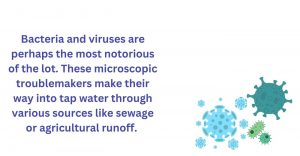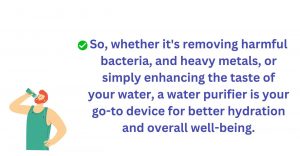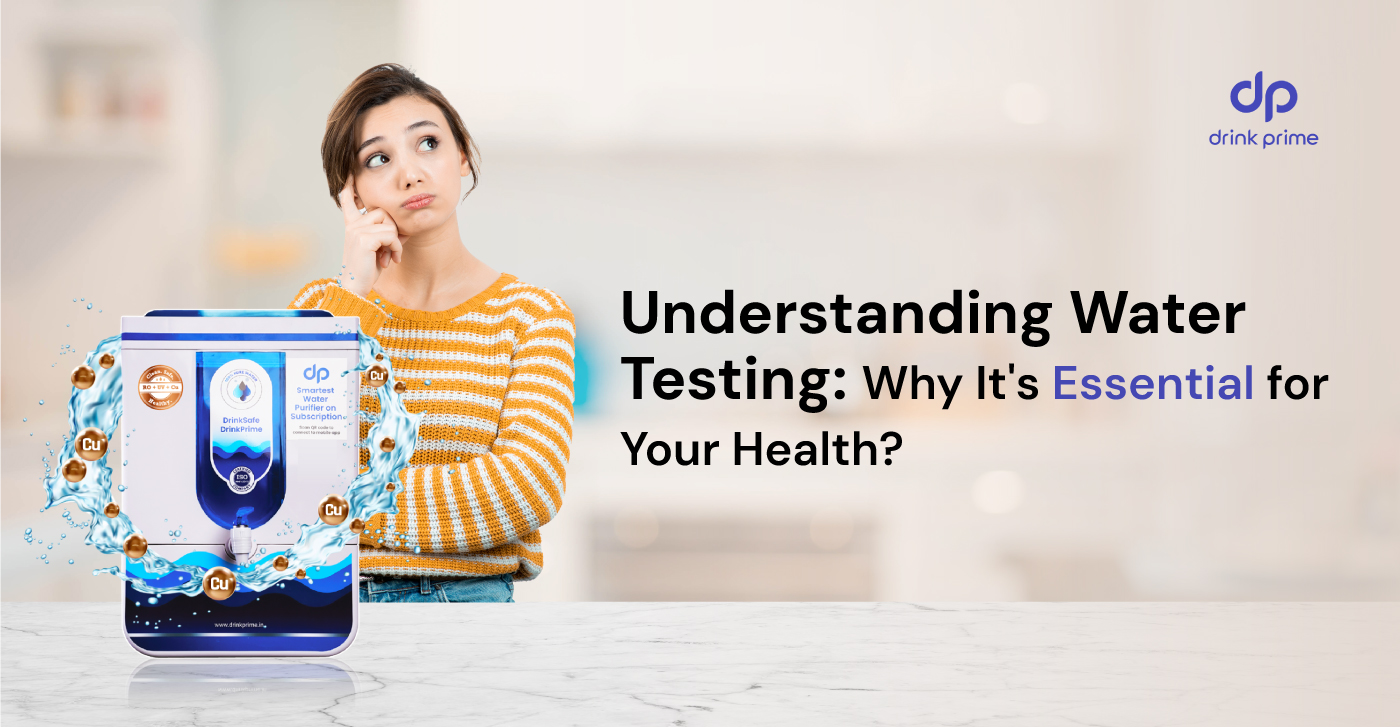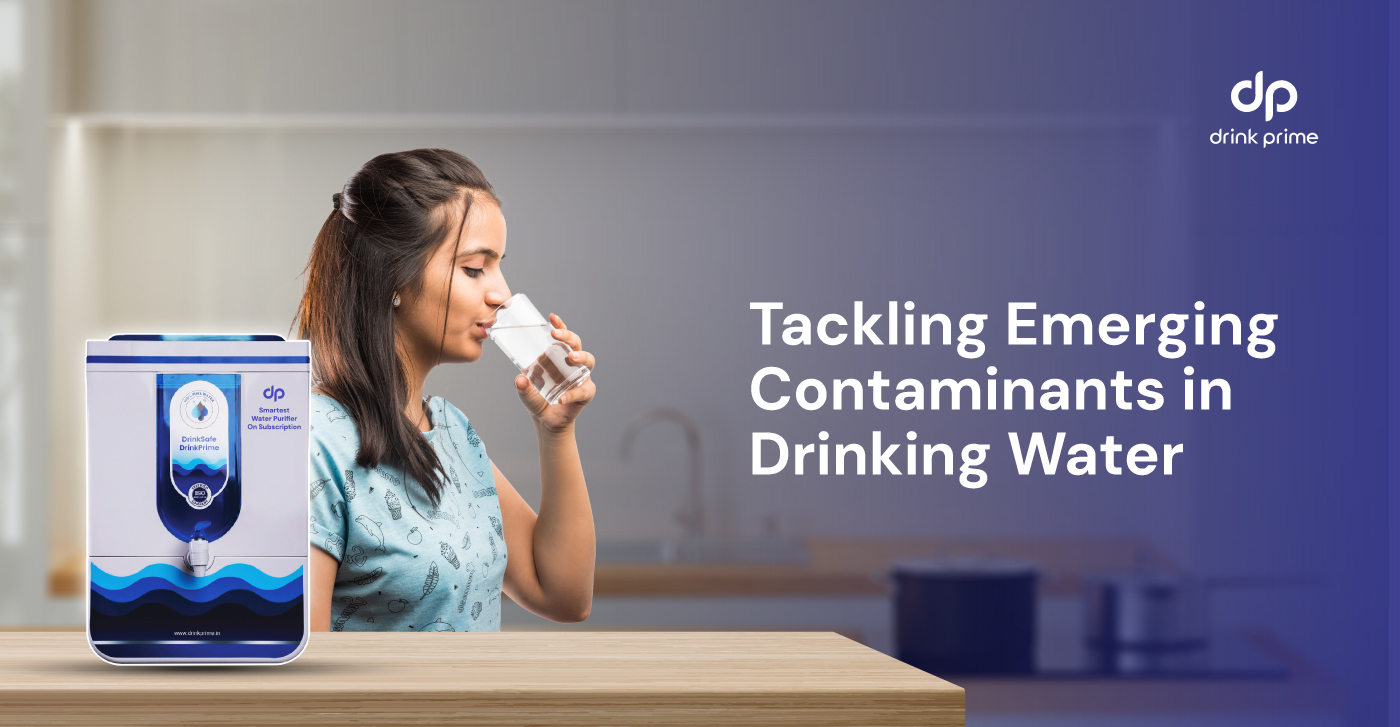Ever wondered why your tap water sometimes tastes a bit off? Or why does it smell bad or have some tiny particles in it?
The answer is simple. Our tap water contains several water contaminants that are not visible to the naked eye.
This is why it is important to understand the different contaminants that are present in our drinking water and how the superheroes of our kitchens, water purifiers help in purifying them!
We’re all pretty good at worrying about the air we breathe or the food we eat, but we often overlook the water that we drink daily. Not to forget we cannot live without water. Turns out, there’s a whole host of water contaminants that can sneak into our water supply and wreak havoc.
But the good news is – water purifiers are here to save the day!
In this blog, we’re going to look at some of the common water contaminants swimming around in our drinking water and unveil the genius behind how water purifiers work to filter it to keep our hydration game strong. So, grab a glass of water (filtered, of course!), and let’s dive in!
What are common contaminants in drinking water?
When you turn on your tap for a refreshing glass of water, it’s easy to assume that what flows out is pure and safe. But here’s the eye-opener: tap water often harbors a whole range of contaminants that are far from friendly.
Let us have a look at some of the common water contaminants present in our drinking water:

Microorganisms
Bacteria and viruses are perhaps the most notorious of the lot. These microscopic troublemakers make their way into tap water through various sources like sewage or agricultural runoff. While some bacteria can be harmless, others like E. coli or Salmonella definitely lead to severe illnesses. Viruses like Norovirus can also cause gastrointestinal nightmares.
Heavy metals
If bacteria and viruses weren’t enough, heavy metals like lead, mercury, and arsenic are found in your tap water too. Often originating from industrial discharges or even natural deposits, these heavy metals cause serious health impacts over time. Lead, for instance, leaches into tap water from old plumbing systems, causing developmental issues, especially in children.
Sediment
Sediment is another common tap water contaminant, making your water look cloudy and unappealing. It’s usually a mix of dirt, sand, rust, and other particles that manage to find their way into the water supply. While not always harmful, sediment affects the taste, and appearance, and even clogs pipes.
Chlorine
Though used to disinfect water, chlorine ironically creates unwanted byproducts that pose health risks. These byproducts, like trihalomethanes, form when chlorine reacts with organic matter in water. While regulations keep these byproducts at safe levels, the possibility of their presence is still a little unsettling.
Pesticides and herbicides
Pesticides and herbicides from agricultural runoff also find their way into tap water. These chemicals, designed to kill pests and weeds, end up in water sources and eventually your glass. Long-term exposure to such contaminants has the potential to lead to a range of health issues like cancer and endocrine-related issues.
Personal care products
Lastly, pharmaceuticals and personal care products might not be the first thing you associate with tap water, but traces of these substances have been detected in various water supplies. Flushed-down medications or products that get washed off often end up in water sources and pose potential risks.
How do water purifiers remove contaminants?
Water purifiers are always working to ensure that the water you consume is safe and free from harmful contaminants. Wondering how they do it and why you should consider investing in one? Let’s understand it.
These water purifiers use a combination of advanced filtration techniques to tackle a range of water contaminants that could potentially be lurking in your tap water. Let’s break down the magic:
1. Physical Filtration
This method involves physically trapping larger particles like sediment, rust, and even tiny organisms using fine filters. These filters act like a sieve, letting the clean water pass through while blocking the unwanted particles.
2. Activated Carbon
Activated carbon is a superhero in the world of filtration. It’s fantastic at removing chlorine, bad odors, and even some chemicals. It absorbs impurities, leaving behind better-tasting and fresher water.
3. Reverse Osmosis (RO)
RO is like a super-fine filter that uses pressure to force water through a membrane, leaving behind contaminants and impurities. It’s incredibly effective at removing heavy metals, bacteria, viruses, and even dissolved salts.
4. UV Purification
UV technology kills microbes by emitting ultraviolet light, disrupting their DNA and making them harmless. It’s a powerful method to kill bacteria, viruses, and other pathogens.
Get 7 Days Risk Free Trial
Conclusion
This is why investing in a water purifier isn’t just about fancy technology; it’s about safeguarding your health and well-being. Here’s why you should seriously consider it:

1. Safe and healthy water
By removing contaminants, you’re reducing the risk of consuming harmful substances that could impact your health in the long run.
2. Better Taste
Say goodbye to that strange aftertaste or odor that sometimes comes with tap water. Purified water tastes cleaner and fresher.
3. Cost-Effective
With so many water purifier brands available in the market to rent, bringing a water purifier home is no longer expensive.
4. Environmental Impact
Reducing the need for bottled water means less plastic waste, contributing to a healthier planet.
5. Peace of Mind
With a water purifier, you can sip worry-free, knowing you’re doing your best to ensure your and your family’s safety.
So, whether it’s removing harmful bacteria, and heavy metals, or simply enhancing the taste of your water, a water purifier is your go-to device for better hydration and overall well-being. It’s an investment that’s worth it!



